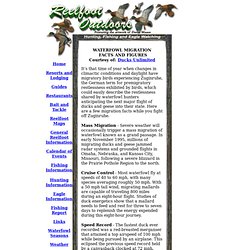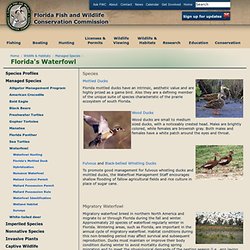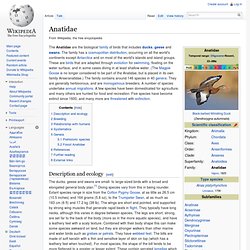WATER BIRDS
> BIRDS
Convention on Migratory Species, African-Eurasian Waterbird Agreement (AEWA): Introduction. Waterbirds Home. National Audubon Society Birds. Our Journal — The Waterbird Society. Our Journal Waterbirds The International Journal of Waterbird Biology The Waterbird Society has published results of scientific research for over two decades beginning with a proceedings of papers presented at the annual meetings from 1978 to 1980 followed in 1981 by a refereed, international journal, formerly called Colonial Waterbirds.

In 1999, the journal became Waterbirds to reflect the society’s expanded focus on all aquatic birds and their habitats. The journal is produced by an editor and an international panel of associate editors and is open to submitted papers concerning the biology, conservation, and techniques of study of the world’s waterbirds including seabirds, wading birds, shorebirds, and waterfowl. The Table of Contents for Waterbirds is available. Online Access For online access to Waterbirds go to the BioOne Web site (www.bioone.org) then you have to register on their site before your access will start up. 1) Go to Login onlinepublishing@allenpress.com. Duck Flying Facts. WATERFOWL MIGRATION FACTS AND FIGURES Courtesy of: Ducks Unlimited It’s that time of year when changes in climactic conditions and daylight have migratory birds experiencing Zuginruhe, the German term for premigratory restlessness exhibited by birds, which could easily describe the restlessness shared by waterfowl hunters anticipating the next major flight of ducks and geese into their state.

Here are a few migration facts while you fight off Zuginruhe. Mass Migration - Severe weather will occasionally trigger a mass migration of waterfowl known as a grand passage. In early November 1995, millions of migrating ducks and geese jammed radar systems and grounded flights in Omaha, Nebraska, and Kansas City, Missouri, following a severe blizzard in the Prairie Pothole Region to the north. Cruise Control - Most waterfowl fly at speeds of 40 to 60 mph, with many species averaging roughly 50 mph.
Amazing Waterfowl Facts. Waterfowl are among the most diverse and interesting creatures on the planet.

Inhabiting every continent except Antarctica, ducks, geese, and swans can be found just about everywhere there's water, from the High Arctic to the tropics and from the ocean to the desert. To survive in these varied environments, waterfowl have incredible abilities and do amazing things. Have you ever wondered which duck flies fastest, migrates farthest, or dives deepest? Do you know the largest number of waterfowl ever seen in one place, or why the Labrador duck became extinct? Read on to learn the answers to these questions and much more about the waterfowl of North America and beyond. All of this continent's waterfowl can dive, but some species are much better at it than others. Female wood ducks must ingest 75 grams (2.6 ounces) of invertebrates to obtain enough protein and minerals to produce one egg.
Most waterfowl fly at speeds of 40 to 60 mph, with many species averaging roughly 50 mph.
California Waterfowl Association. Waterfowl Pictures. Welcome to Waterfowl U.S.A.
Florida's Waterfowl. Species Mottled Ducks Florida mottled ducks have an intrinsic, aesthetic value and are highly prized as a game bird.

Also they are a defining member of the unique suite of species characteristic of the prairie ecosystem of south Florida. Wood Ducks Wood ducks are small to medium sized ducks, with a noticeably crested head. Fulvous and Black-bellied Whistling Ducks To promote good management for fulvous whistling ducks and mottled ducks, the Waterfowl Management Staff encourages shallow flooding of fallow agricultural fields and rice culture in place of sugar cane. Migratory Waterfowl Migratory waterfowl breed in northern North America and migrate to or through Florida during the fall and winter.
Mallards in Florida History has proved that the concern over the loss of the Florida mottled duck to hybridization is a real one and should not be taken lightly. FWC Waterfowl Management Strategic Plan. Anatidae. Description and ecology[edit] Their feathers are excellent at shedding water due to special oils.

Many of the ducks display sexual dimorphism, with the males being more brightly coloured than the females (although the situation is reversed in species such as the Paradise Shelduck). The swans, geese and whistling-ducks lack sexually dimorphic plumage. Anatids are vocal birds, producing a range of quacks, honks, squeaks, and trumpeting sounds, depending on species; the female often has a deeper voice than the male.[2] Anatids are generally herbivorous as adults, feeding on various water-plants, although some species also eat fish, molluscs, or aquatic arthropods. Breeding[edit] The anatids are generally seasonal and monogamous breeders.
Relationship with humans[edit]





